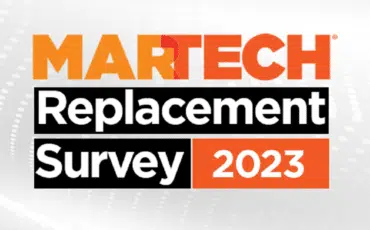A digital asset administration (DAM) platform isn’t meant to be a lock field or a black gap the place belongings go in however by no means come out. Your DAM creates worth and effectivity by permitting you to find present belongings for reuse simply.
It helps you handle utilization rights and restrictions to keep away from regulatory and authorized points when reusing belongings. The keystone of that course of is metadata.
This text explores why you need to keep away from having too many metadata fields and easy methods to streamline metadata administration in your DAM.
You possibly can by no means have an excessive amount of of a very good factor, proper?
Essentially the most primary definition of metadata is information about information. It’s the knowledge that’s assigned to your belongings to explain them. It feeds your search outcomes and filters, permitting you to find the precise asset you want.
Your chosen DAM system doubtless comes with a regular set of out-of-the-box metadata fields masking the fundamentals — title, description, file sort, and so forth. And also you’ll need to add further customized fields tailor-made to your business, firm and merchandise.
Relating to DAM metadata, many organizations make the error of assuming that extra is all the time higher, particularly if it’s their first time utilizing a DAM system. If metadata is the keystone of your DAM, you then need as a lot metadata as potential per asset, proper?
Properly, not essentially. You additionally want to recollect the effort and time wanted to enter the metadata. Whereas automation and AI can help with metadata entry, they’ll’t absolutely exchange human eyes and data.
Dig deeper: Right here’s why you want a DAM workflow — and easy methods to map it out
Discovering the correct stability
The secret is having the correct metadata. You need to discover a stability between the usefulness and worth of the metadata and the effort and time expended to enter it.
An excellent train to undergo together with your stakeholders is to take the preliminary record of metadata fields that you just’ve compiled, together with out-of-the-box and customized fields and rank them as must-haves, nice-to-haves and never wanted or redundant.
Don’t be afraid to push again and query if a area is really wanted. The important thing inquiries to return to usually within the dialogue ought to be:
- Does this area include data that can assist my finish customers find the belongings they want?
- Is the worth this area gives definitely worth the time it takes to enter the knowledge?
- Is there a authorized, regulatory or organizational cause the knowledge on this area have to be connected to belongings?
To your must-have fields, you’ll additionally want to find out if the sector ought to be required, that means all belongings within the DAM should have data entered in that area with the intention to be retained and obtainable to be used.
Be very selective with designating fields as required. The extra required fields, the extra effort and time it takes to finish the metadata per asset. An excellent gauge is to find out if any belongings would want filler tags, like N/A, None or Different entered into that area as a result of it’s required, and there merely aren’t any particular phrases that apply. That may point out that the sector isn’t truly universally required.

However we actually do want all these fields!
In case your stakeholders aren’t budging and the record of metadata fields they’d like included within the DAM is longer than you’re recommending, you might have to initially decide your battles. Belief me, it can work out.
Within the early days of the DAM, you might even see those that are chargeable for importing belongings and making use of metadata truly filling out nearly all of the fields. Over time although, it can naturally evolve that some fields might be all or principally deserted as issues get busy and a extra environment friendly metadata routine develops.
Your uploaders will hone in on what data is most respected for the time allotted for entry and begin adjusting their metadata entry accordingly. You then’ll be in a key place to tighten up the metadata. We’ll return to this later.
Streamlining the method
You have got a spread of choices when establishing your metadata fields. There are a number of methods you may set up and group the fields and a number of codecs obtainable for these fields.
For the sector format, take a look at all of your choices and choose the kind of area that makes essentially the most sense for the info it can maintain. Use date fields for dates, quantity fields with the suitable variety of character limits for numbers, and so forth.
Attempt to reduce free textual content fields as a lot as potential in favor of managed vocabularies in drop-down and multi-select fields. This eliminates the opportunity of spelling errors and removes confusion over completely different phrases used inside your group to explain the identical factor.
Everybody should use a standardized time period quite than acronyms or abbreviated phrases. Making a glossary obtainable for managed vocabulary fields will also be very useful to your customers, each these inputting metadata and people trying to find belongings.
Group your fields in a manner that is sensible to the customers getting into the metadata and fosters the best ease and effectivity for metadata entry. Find the most-used fields on the prime of the web page to attenuate scrolling. You probably have required fields, guarantee they’re simply identifiable.
Use auto-tagging and AI instruments the place you may to encourage consistency. Bear in mind, although, that these instruments want supervision. They have to be arrange, skilled after which QAed and up to date constantly. There might be modifications and exceptions that have an effect on automated tagging workflows, and human eyes are wanted to be sure to’re sustaining accuracy in your metadata.
Dig deeper: DAM governance construction outlined and defined
However there are nonetheless so many fields!
Managing metadata is rarely performed. As enterprise wants and processes change, you will need to all the time guarantee your metadata retains up and stays related. Fields might be added and eliminated, and metadata tags in present fields should be added, eliminated or up to date.
However what about all these fields the enterprise insisted they wanted however then deserted? As soon as your DAM is buzzing alongside and metadata enter has been considerably routine, you’re in a superb place to revisit that area stock.
Use no matter reporting instruments can be found in your DAM to get a full image of how your metadata is entered and used. Run stories on all of the metadata fields in your DAM, breaking them up into manageable items, if wanted, for the total stock of belongings.
From the end-user perspective, pull stories on the preferred search phrases and filters. Additionally, what search phrases are customers getting into which might be returning zero outcomes?
If there are gaps within the helpful stories obtainable, survey your customers, each inputters and finish customers. What frustrates them? What suggestions have they got for tweaks to the metadata fields and their structure or the obtainable search filters that will make their lives simpler?
When you’ve gathered all of your stories and suggestions, take a look at the historical past and present state of your metadata. See in the event you can pull out some themes or patterns:
- Are there fields which have by no means or hardly ever had metadata entered?
- Are there fields which will have been used persistently within the early days of your DAM however have been deserted since?
- Do you see any redundancies with sure items of metadata entered throughout a number of fields?
As you analyze the info and discover fields which might be candidates for removing out of your metadata construction, that is additionally a good time to revisit these questions you requested your self and your stakeholders if you first began defining the construction:
- Does this area include data that can assist my finish customers find the belongings they want?
- Is the worth this area gives definitely worth the time it takes to enter the knowledge?
- Is there a authorized, regulatory or organizational cause the knowledge on this area have to be connected to belongings?
Use the collected information to current a proposal to your stakeholders on easy methods to tighten up your metadata construction to make it extra environment friendly and efficient. Getting their buy-in ought to be simpler now that you’ve got consumer suggestions, numbers and historic data.
And bear in mind, helpful updates aren’t restricted to eradicating unused and underutilized fields. Fields might be moved to completely different areas on the web page. A brand new column or order inside the column might make a area extra outstanding and simpler to see, growing the probabilities it will get used.
When much less scrolling is required to view the column, the likelier will probably be used. Fields might be renamed if the outline isn’t clear. Customers is probably not getting into metadata in a specific area just because they’re undecided precisely what they’re anticipated to enter there.
In some instances, the format of a area might be modified. For instance, would changing a specific free textual content area right into a dropdown be potential to avoid wasting time and enhance information accuracy?
Eradicating fields decided to be extraneous might provide the most bang to your buck when it comes to effectivity, however keep in mind that the usefulness, accuracy and integrity of your metadata are your major goals.
Some unused fields might include historic data you will need to maintain for authorized functions, so that you don’t need to delete them outright. In these instances, you may conceal the fields from the present view and nonetheless have them obtainable for reporting or restoration to your metadata type if required.
As with most areas of your DAM, sustaining and enhancing your metadata construction is an ongoing course of. As an important facet of the DAM, metadata requires common consideration to make sure accuracy and relevance.
Reporting and consumer suggestions might be important elements as you’re employed with the enterprise and your stakeholders to take care of that stability of effectivity and worth. With the correct care and a focus, metadata will be certain that your belongings movement out of your DAM as seamlessly as they movement in.
Get MarTech! Day by day. Free. In your inbox.
Opinions expressed on this article are these of the visitor creator and never essentially MarTech. Employees authors are listed right here.

